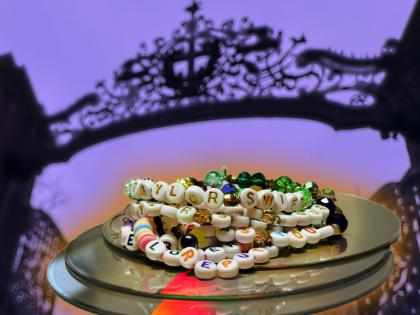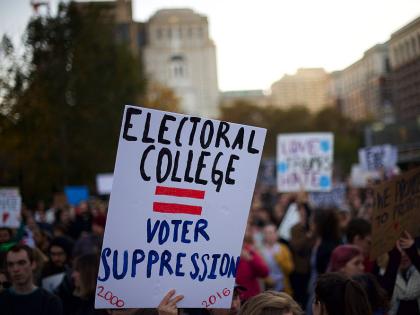On the balmy waves above a coral reef we once called Harvard Yard, a twenty-seventh-century Thoreau seeks Waldenesque contemplation. On a doomed planet, a father and daughter race to decipher an extraterrestrial society’s dying words. In Tang dynasty China, an apprentice thief must decide how to use her arcane talent for stealing lives.
The tales by Ken Liu ’98, J.D. ’04, in The Hidden Girl and Other Stories (Gallery/Saga Press), published February 25, run the gamut in setting, scope, and even form: a scrap of scripture from an imagined monastery shares space with a sci-fi saga spanning a million years of future history. But in a way, they are all ghost stories. Liu’s writing, here and elsewhere, brims not only with literal spirits of the dead, but with ghosts in the machine, ghosts of our past selves, and ghosts of futures that never came to pass. Hidden Girl examines–through narratives full of magic, extant innovations, or technologies so speculative they may as well be magic–how we remain connected to ourselves during relentless change.
Harvard Beneath the Waves
Though his stories are often set in the distant past or far future, Liu, who lives in the Boston suburbs with his wife and two daughters, says his eyes are firmly on the present. “I feel that often science fiction is viewed as a genre that’s about predicting the future,” he says, “which I have never been interested in doing, ever, with my fiction.”
Thus when he submerges Harvard (and indeed most of Greater Boston) under meltwater-swollen seas in “Dispatches from the Cradle,” it’s less prophecy than a reflection of the campus where Liu studied computer science and English—and discovered a fondness for the American Transcendentalists—before moving up the street to the law school.
“If you read Thoreau and Emerson and [their modern successors like] Annie Dillard, they have a deep appreciation for the physicality of human existence,” he explains. “They try to pull away from the dualism of Enlightenment thinking, to imagine the human subject not as something apart from nature and dominating it, but rather as deeply embedded in and part of nature.”
Through his characters in “Dispatches from the Cradle,” Liu postulates that this philosophy grew out of awe for New England’s dramatic fall foliage. This roots transcendentalism not only in a particular geography but also in a passing time: in the twenty-first century, climate change is already muting Harvard Yard’s autumn colors (see Is Climate Change Ruining Fall?) and by Liu’s twenty-seventh century they are replaced by equally splendorous crimson coral and bioluminescent creatures.
“In some ways it’s a little homage to my alma mater, because it was so important to shaping who I am,” he says, but “it’s also a little commentary on the way Harvard…perceives itself as outside of geography. It’s a global capital of learning, so it doesn’t view itself as embedded in a community, but it’s embedded and embodied and as much of this place as anything else.”
Liu doesn’t always navigate the knife’s edge between prophecy and parable as ably as in “Dispatches from the Cradle.” Some readers may agree with the Publishers Weekly reviewer that his exposition of near-future technologies veers too close to “infomercials for fictional technologies”; this reviewer, with an appetite for such geekery, found more distracting the glorious impossibility of a plot element in several entries: “uploading” billions of human minds so that our society of billions moves entirely to a server farm in the Arctic. But Liu never indulges in technobabble for its own sake: even the most distracting technologies root poignant tales about interhuman connectedness.
Our Stories, Our Selves
“It’s that embeddedness of our identity, of our humanity, that I feel is threatened a lot of times by modernity,” says Liu, pointing to the way everything from automobiles to the Internet intercedes between our bodies and the communities and environments we would otherwise connect to. So Hidden Girl’s characters reach for links to each other, to the past, and to new sources of meaning, grappling again and again with how to remain themselves—despite migrating across seas or light years, despite technology turning humanity into gods and monsters, despite the world ending in nuclear fire or melting ice. The ghosts are there to help, animated by magic, technology, or simple memory. In “Maxwell’s Demon,” two deceased souls and the protagonist—torn from her family by the U.S. internment of Japanese Americans during World War II—try to help each other return home. In “The Gods Will Not Be Chained,” the protagonist’s father, aided by a bit of speculative neurotechnology, is reincarnated as a god-like computer program to guide her from beyond the grave.
Our humanity, Liu’s tales propose, comes from the stories we tell about our past—memory, history, myth—and the way our present reshapes them. Liu says he’s “ambivalent” about this facet of human nature, even if his stories, Armageddons included, read as fundamentally hopeful.
“We do believe that it is not mere randomness, that disasters and atrocities in fact have causes we can stop, that we can do things better. That’s a good thing. But it is also a terrible thing, because sometimes when our stories clash, we end up getting into conflicts,” for example, over “what does it mean to be American, who gets to tell that story.”
That’s an idea Liu says will run throughout The Veiled Throne (the forthcoming conclusion to his Dandelion Dynasty series), an excerpt of which is included in Hidden Girl’s collection. He bemoans that the fictional isles of Dara, where the trilogy is set, are “often described as Asian-inspired. I think that’s actually not a good way to think about the stories at all.” Anglophone readers may get the wrong impression from the dragon-like “garinafins,” silk airships, and echoes of Chinese history, but Liu borrows from Homeric and Anglo-Saxon epics and the ubiquitous trickster archetype as well (see “Fusion Fantasy,” November-December 2016). Dara is “sort of a fantasy version of America more than anything else,” he explains, adding that The Veiled Throne asks “how do you build a nation, how do you allow a national myth to emerge organically from a whole people?”
The answer to that question has changed in the telling. Though Liu says he had a concluding scene for the series in mind before he set pen to paper, “the way I got there is much more circuitous, and reflects what happened to the world in the interim 10 years. I got a better understanding both of how wonderful human beings can be and also how craven and cowardly and self-justifying we can be. So, my villains are more villainous and my heroes are more heroic, which I think is generally a good thing.”









